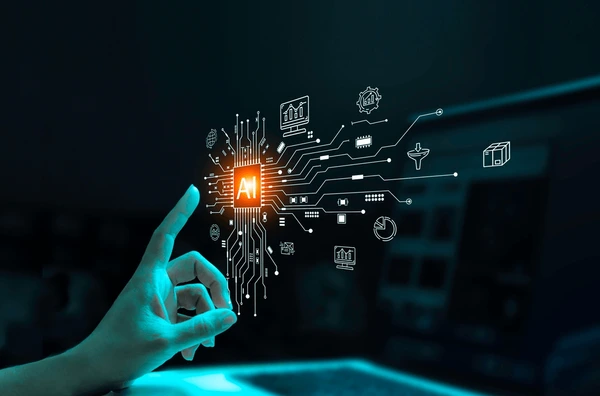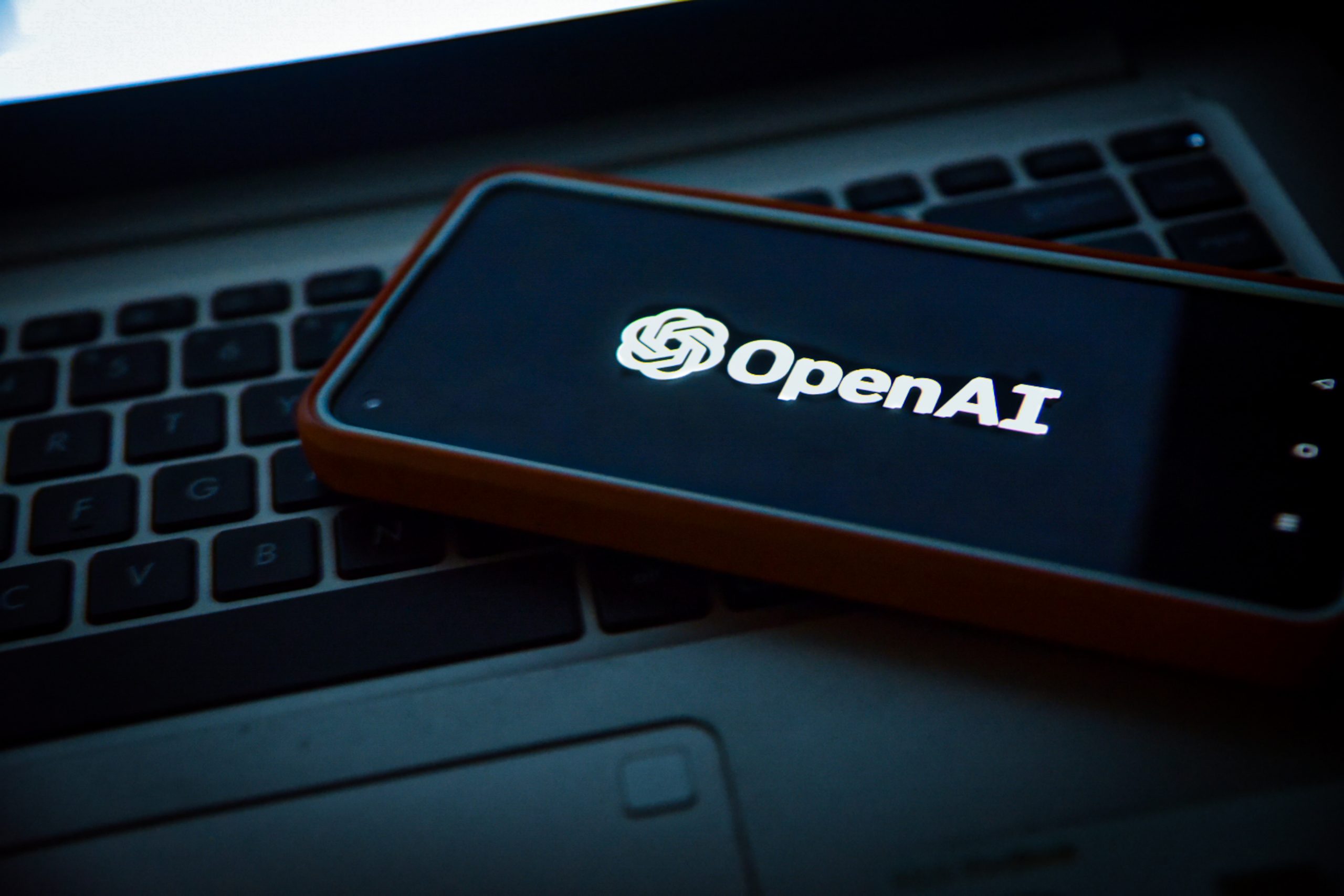An AI-powered Learning Management System (LMS) can enhance the learning experience for students and streamline administrative tasks for educators. In this article, we will explore the key features of an effective AI-powered LMS, the process of choosing the right AI technologies for your LMS, designing a user-friendly interface, overcoming common implementation challenges, and real-life case studies of successful AI-powered LMS implementations.
Key Features of an Effective Learning Management System
At WeSoftYou, we recognize the critical role of an AI-powered Learning Management System (LMS) in transforming education. Drawing from our extensive software development experience, we’ve identified several key features that can significantly enhance the learning experience. Here’s a structured look at these features:
1. Personalized Learning Paths
- AI Technologies: Utilize machine learning and natural language processing.
- Functionality: Analyzes student data to offer tailored recommendations for courses, materials, and assessments.
- Benefits: Ensures each student receives customized support and resources, enhancing their learning journey.
2. Advanced Analytics and Progress Tracking
- AI-Powered Analytics: Provides insights into student performance and progress.
- Features:
- Identifies areas needing improvement.
- Predicts future learning outcomes.
- Benefits: Enables educators to make data-driven decisions and timely interventions to support student success.
3. Enhanced Collaboration Tools
- AI Assistance: Recommends suitable team members for group projects based on skills and interests.
- Real-Time Feedback: Facilitates peer-to-peer learning and interaction.
- Benefits: Promotes effective group work and enhances collaborative learning experiences.
4. Seamless Integration with Educational Tools
- Interoperability: Connects with multimedia content, interactive simulations, and virtual reality environments.
- Features:
- Incorporates resources from various educational tools and platforms.
- Provides a holistic and immersive learning experience.
- Benefits: Creates engaging and versatile learning environments tailored to diverse educational needs.
5. User-Friendly Interface
- Design Priorities:
- Intuitive navigation.
- Clear content organization.
- Accessibility features.
- Benefits: Maximizes student engagement, supports active learning, and ensures a visually appealing and responsive user experience.
Designing a User-Friendly Interface for Learners
While AI technologies are at the core of an AI-powered LMS, designing a user-friendly interface is equally important. From our experience, we recommend following these best practices:
- Simplicity: Keep the interface clean and intuitive, avoiding clutter and unnecessary complexity.
- Accessibility: Ensure that the LMS is usable by learners with different abilities, including those with visual or hearing impairments.
- Mobile Compatibility: Design the LMS to be responsive and accessible on various devices, including smartphones and tablets.
- Customizability: Allow learners to personalize their learning environment by choosing themes, layouts, and other preferences.
By taking these factors into consideration, you can create an AI-powered LMS that is not only powerful in terms of AI capabilities but also user-friendly and accessible for learners.
Moreover, when designing a user-friendly interface for learners, it is essential to conduct usability testing with a diverse group of potential users. This testing can help identify any pain points or areas of improvement in the interface design, ensuring a smoother learning experience for all learners. Incorporating feedback from real users can lead to valuable insights that may not have been apparent during the initial design phase.
Another crucial aspect to consider is the integration of gamification elements within the LMS interface. Gamification can enhance learner engagement and motivation by incorporating game-like features such as points, badges, leaderboards, and progress tracking. By adding these elements strategically, educators can create a more interactive and rewarding learning environment that encourages active participation and knowledge retention.
Best Practices for Implementing AI in Your LMS
Implementing AI technologies in your LMS can be transformative, but following best practices ensures a smooth and successful integration. Here are some key strategies to consider:
1. Define Clear Objectives
Before beginning the implementation process, establish clear goals for what you want to achieve with AI integration. Whether it’s improving student engagement, personalizing learning experiences, or enhancing administrative efficiency, having specific objectives will guide the selection of appropriate AI technologies and help measure success.
2. Engage Stakeholders Early
Involve key stakeholders, including educators, students, and IT staff, from the outset. Their input is invaluable for identifying needs and potential challenges, and their buy-in is crucial for the successful adoption of new technologies. Conduct surveys or focus groups to gather feedback and ensure that the AI solutions meet the users’ needs and expectations.
3. Start with a Pilot Program
Implement AI technologies through a pilot program before a full-scale rollout. This approach allows you to test the AI solutions in a controlled environment, gather feedback, and make necessary adjustments. A successful pilot program can help identify potential issues and demonstrate the benefits of AI to the broader organization.
4. Ensure Data Privacy and Security
Data privacy and security are critical when integrating AI into your LMS. Implement robust security measures, such as encryption and access controls, to protect sensitive student data. Ensure that your AI systems comply with relevant data protection regulations and conduct regular audits to safeguard against breaches and misuse.
5. Provide Training and Support
Offer comprehensive training for educators and staff on how to use the new AI features effectively. This training should cover both the technical aspects of the AI tools and best practices for leveraging AI insights to enhance teaching and learning. Ongoing support and resources will help users adapt to the new technology and maximize its benefits.
6. Monitor and Evaluate Performance
Regularly monitor and evaluate the performance of the AI technologies within your LMS. Use key performance metrics to assess their effectiveness and impact on educational outcomes. Continuously gather feedback from users to identify areas for improvement and ensure that the AI solutions are meeting their intended goals.
7. Iterate and Improve
AI integration is an ongoing process. Based on performance evaluations and user feedback, make iterative improvements to the AI technologies and their implementation. Stay updated with advancements in AI and be prepared to incorporate new features or updates that can enhance your LMS further.
By adhering to these best practices, you can ensure a successful implementation of AI technologies in your LMS, leading to improved educational experiences and outcomes.
Overcoming Common Challenges in AI Implementation
Implementing AI technologies in an LMS can come with its own set of challenges. From our experience, we have identified some common obstacles and solutions:
- Data Quality: Ensure that the data used for training the AI models is accurate, relevant, and diverse. Regular data cleansing and proper data governance practices are essential.
- Privacy and Security: Safeguarding student data is of utmost importance. Implement robust security measures and comply with applicable data protection regulations.
- Technical Expertise: Building an AI-powered LMS requires specialized knowledge and skills. Partnering with experienced software development companies like WeSoftYou can help overcome this challenge.
By addressing these challenges, you can successfully implement AI technologies in your LMS and reap the benefits they offer.
Another significant challenge in AI implementation is scalability. As the volume of data and users in an LMS grows, the AI system must be able to scale efficiently to handle the increased workload. This requires designing a robust infrastructure that can accommodate the expanding needs of the system without compromising performance.
Furthermore, user acceptance and adoption are crucial factors for the successful implementation of AI in an LMS. Educators and students may initially be hesitant to embrace AI technologies due to concerns about job displacement or changes in the learning experience. It is essential to provide adequate training and support to users to help them understand the benefits of AI and alleviate any fears or misconceptions they may have.
Wrapping up
An AI-powered LMS can benefit educational institutions in numerous ways. Firstly, it provides personalized learning experiences tailored to each student’s unique needs and learning style. By analyzing student data, an AI-powered LMS can identify areas where students may need additional support or challenge, ultimately improving learning outcomes.
Additionally, it facilitates collaboration among students, allowing them to work together on projects and assignments, fostering a sense of community and teamwork. Moreover, an AI-powered LMS automates administrative tasks such as grading, scheduling, and course management, freeing up educators’ time to focus on teaching and providing individualized support to students.
If you are interested in building an AI-powered LMS, there are several steps you can take to get started. Firstly, assess your goals and requirements. Understand the specific needs of your educational institution and identify how an AI-powered LMS can address those needs. Next, choose the right AI technologies that align with your goals and requirements.
Consider factors such as scalability, compatibility, and ease of integration. Once you have chosen the AI technologies, design a user-friendly interface that provides a seamless learning experience for both students and educators. Overcome implementation challenges by addressing data quality, privacy, security, and technical expertise. Seek guidance from experts in the field and learn from successful case studies to ensure a smooth and successful implementation. Lastly, consider partnering with software development experts like WeSoftYou who have experience in building AI-powered LMS platforms.
They can provide valuable insights, expertise, and support throughout the development process, ensuring a high-quality and effective solution.
Contact us today for a free consultation or project estimation! We are here to help you transform your educational institution with the power of AI and provide an enhanced learning experience for your students.
The time required to integrate AI into an LMS varies based on several factors, including the complexity of the AI features, the existing infrastructure, and available resources. On average, integration can take several months to a year.
The process typically involves stages such as planning, development, testing, and deployment. A well-structured integration plan and collaboration with experienced AI experts can streamline the process and help ensure a timely and successful implementation. Starting with a pilot phase can also help manage timelines by testing features on a smaller scale before a full-scale rollout.
AI integration can significantly impact the role of educators by automating routine tasks and providing valuable insights. AI handles tasks such as grading, scheduling, and administrative work, freeing up time for educators to focus on teaching and interacting with students. AI also offers data-driven insights into student performance, enabling educators to tailor their teaching strategies and address individual student needs more effectively. Additionally, AI-powered tools can enhance classroom dynamics by providing interactive and dynamic learning resources, allowing educators to deliver more personalized and effective instruction.





















